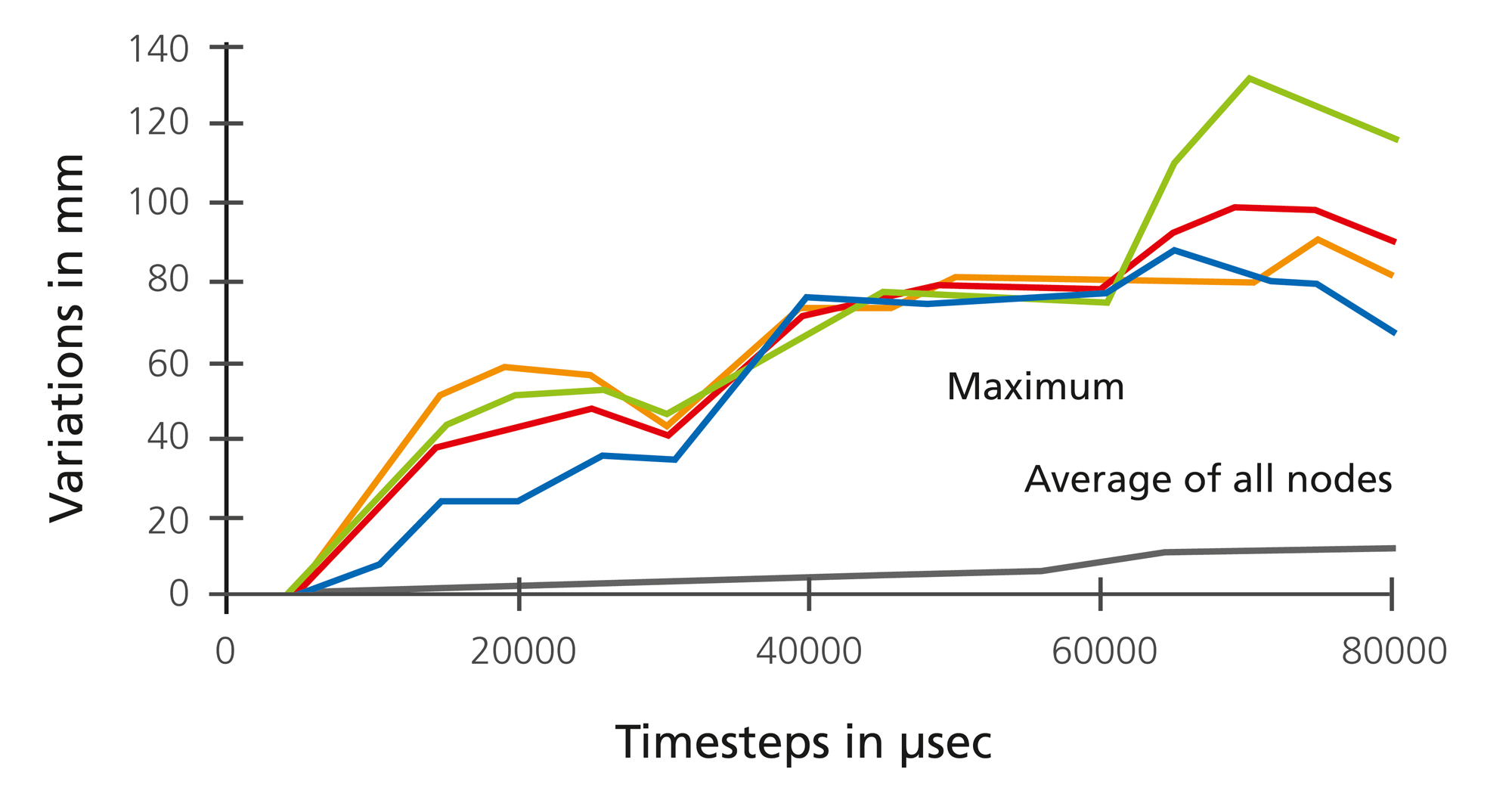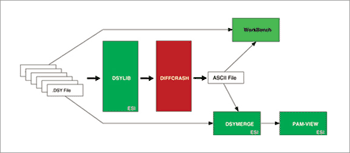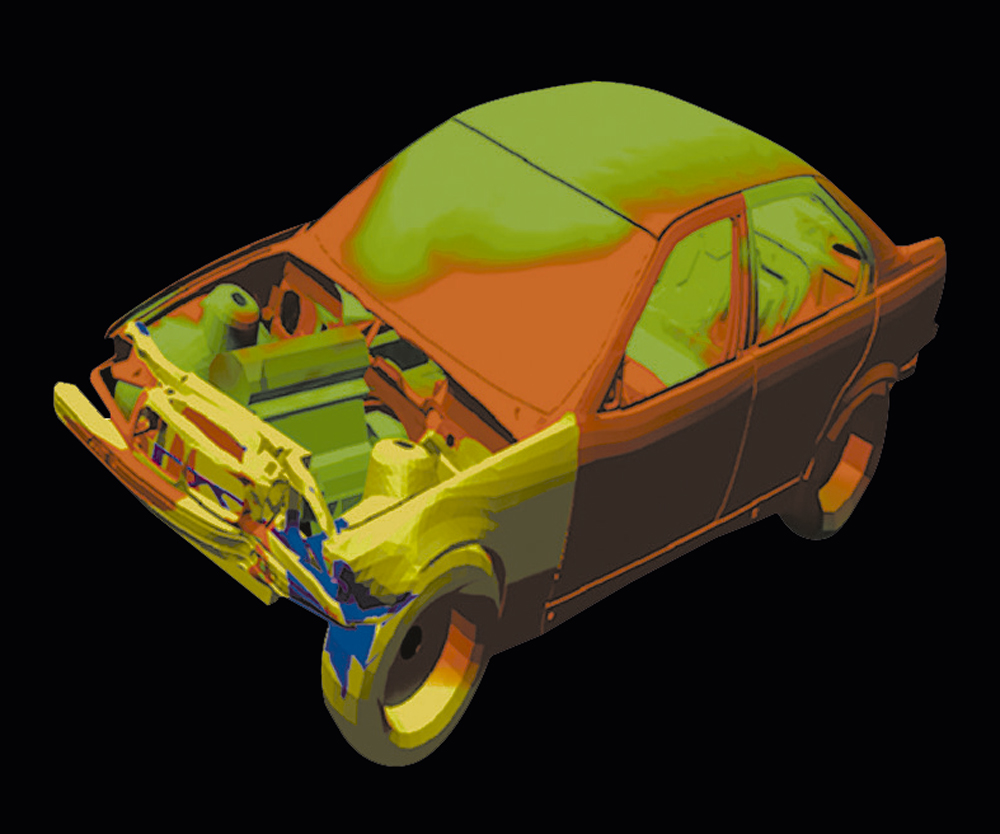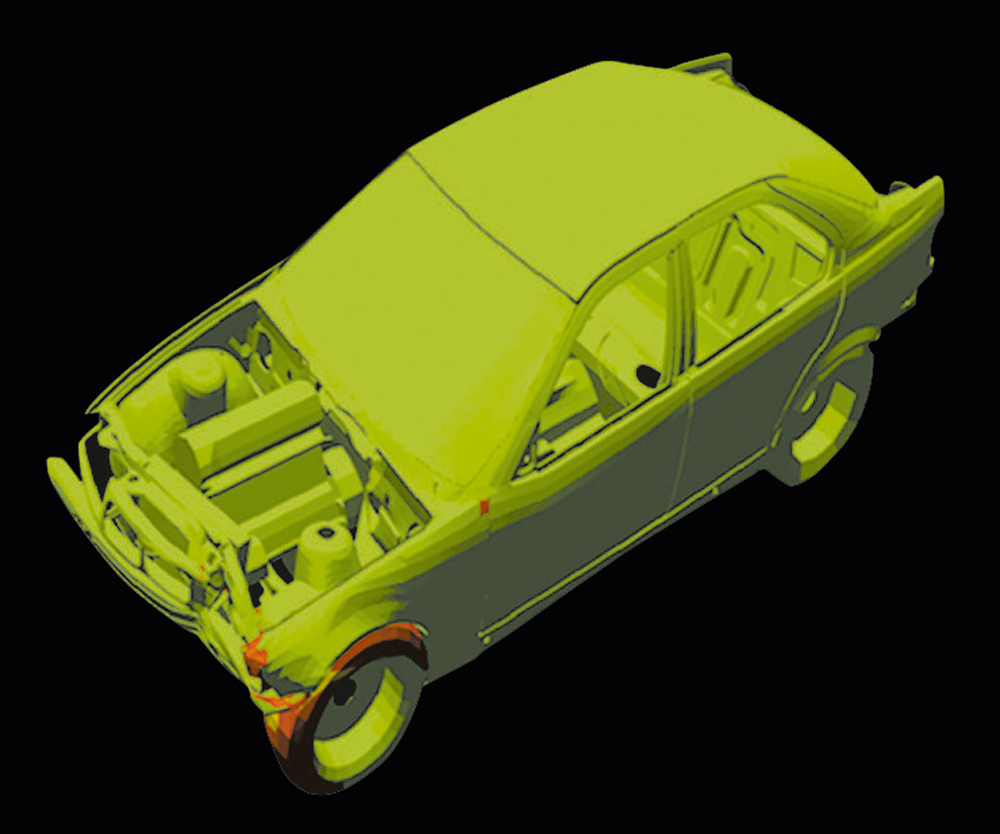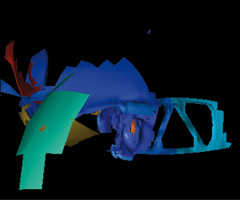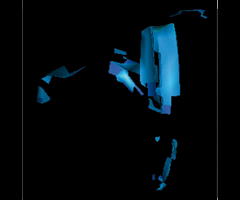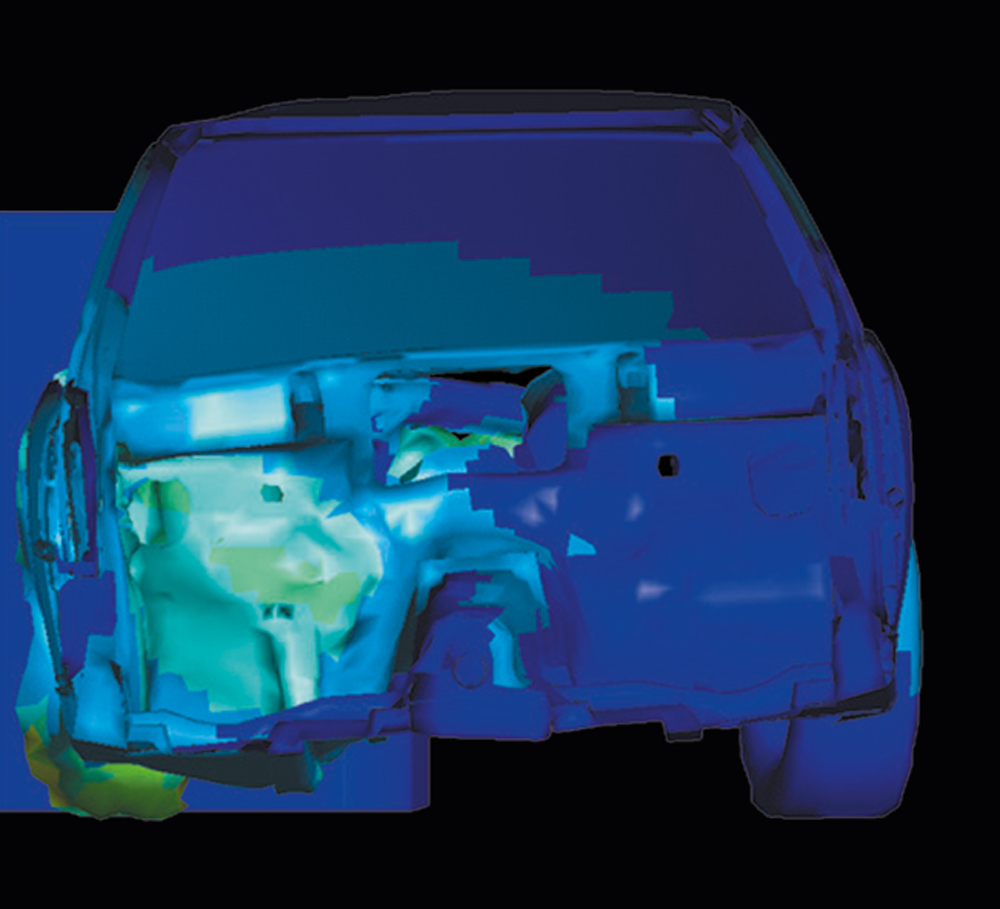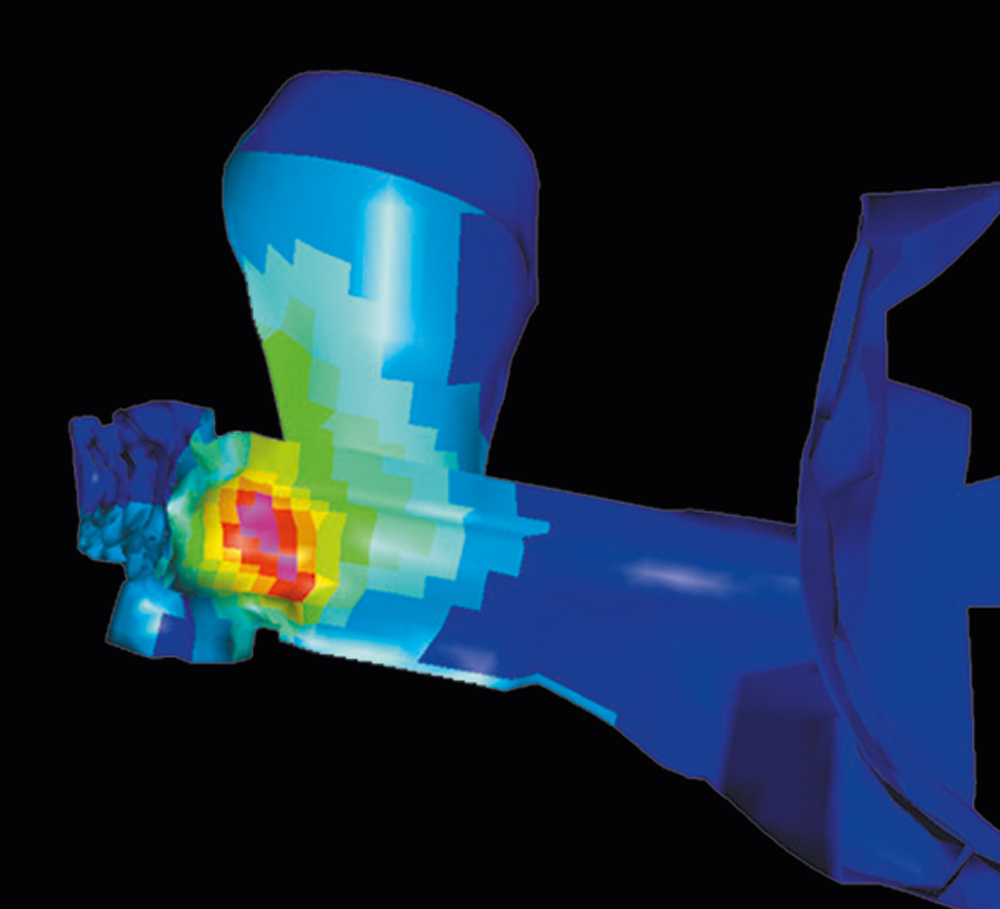Stability Analysis for Simulation Results
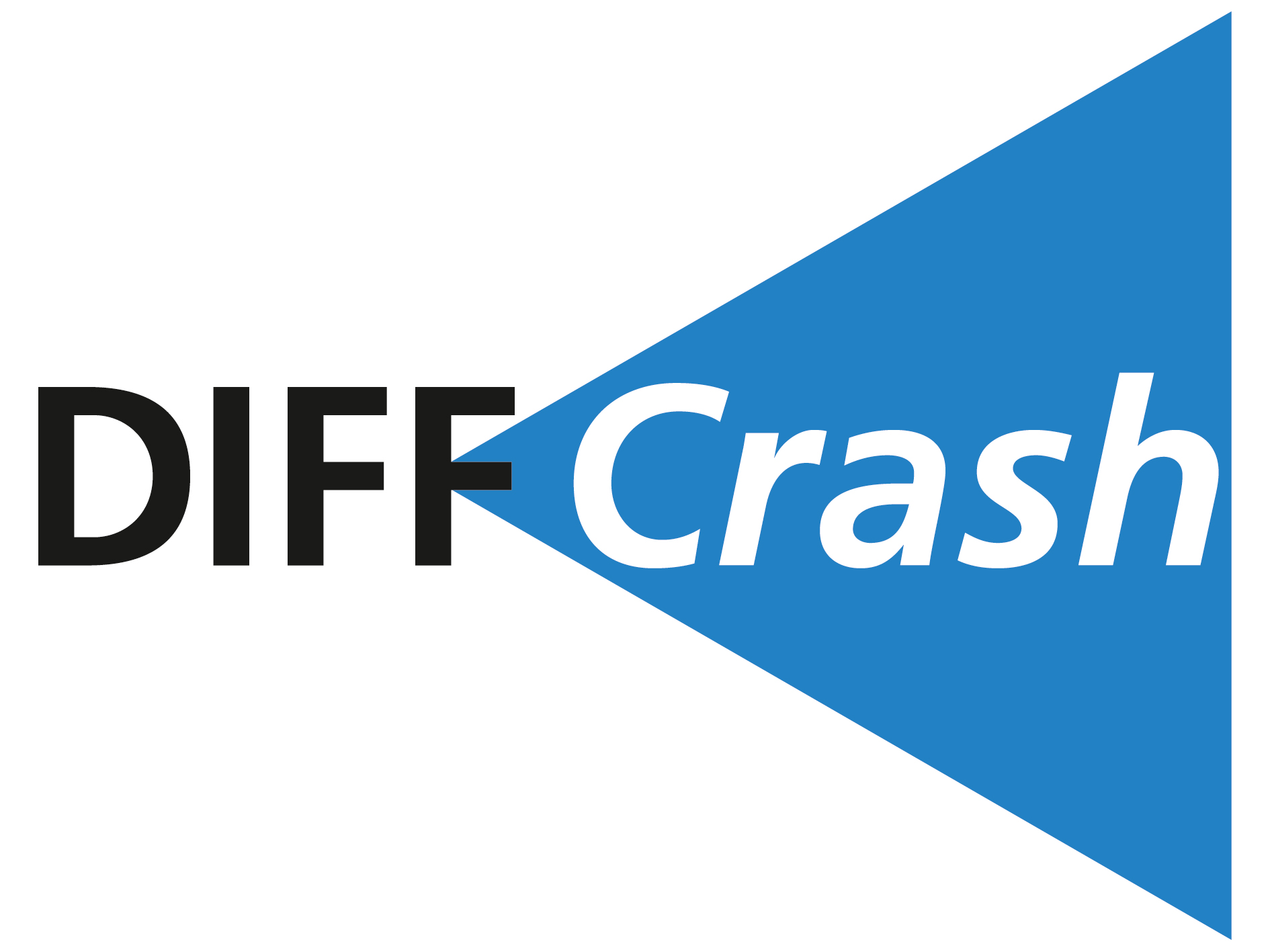
DIFF-CRASH is a software package for the stability analysis of crash simulations. Physical bifurcations in automobile design and numerical instabilities in simulation packages often cause extremely sensitive dependencies of simulation results on even the smallest model changes. Among other things, DIFF-CRASH allows the designer to find these critical structural regions and offers suggestions for their removal.
